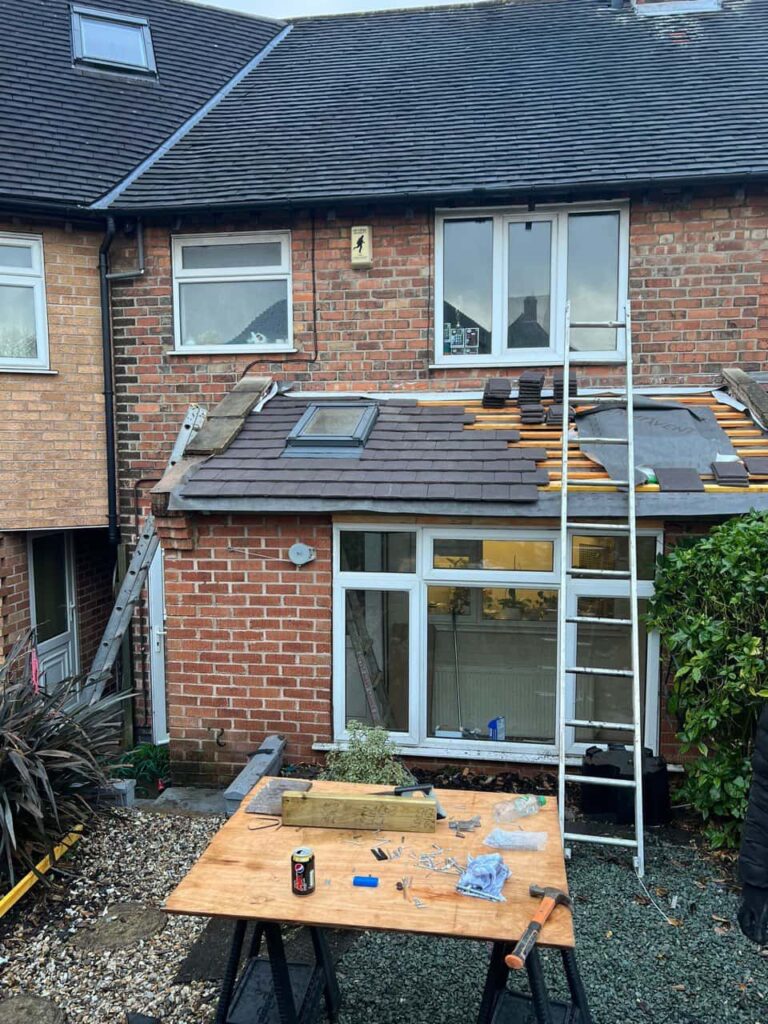Maintaining the integrity of your roof is essential for protecting your home from the elements. Slipped roof tiles are a common issue that can compromise your roof’s effectiveness. At Ripley Roofing Repairs, we specialise in addressing roofing problems, helping homeowners in Ripley, Derbyshire, make informed decisions about their roofing needs. Here’s how to determine whether you should replace or repair slipped roof tiles.
1. Assessing the Extent of the Damage
The first step in deciding whether to repair or replace slipped roof tiles is to assess the extent of the damage:
- Minor Damage: If only a few tiles have slipped and there is no underlying damage, a repair might be sufficient. This involves repositioning or securing the existing tiles.
- Widespread Issues: If multiple tiles are affected or there are signs of underlying damage, such as leaks or structural issues, a replacement might be necessary.
2. Age of the Roof
The age of your roof is a significant factor in your decision:
- Newer Roofs: For roofs that are relatively new and in good condition overall, repairing slipped tiles is often the best option.
- Older Roofs: If your roof is approaching the end of its lifespan, replacing the affected tiles might be more cost-effective in the long run, preventing further issues.
3. Type and Condition of the Tiles
Different types of roof tiles have varying durability and repair needs:
- Concrete Tiles: Generally durable and can often be repaired unless they show significant wear or damage.
- Clay Tiles: More prone to cracking and may require replacement if they are damaged.
- Slate Tiles: Highly durable, but if they are old and brittle, replacing the tiles might be necessary.
4. Underlying Roof Structure
Check the condition of the underlying roof structure:
- Solid Structure: If the roof structure is in good condition and only the tiles are affected, repairs are usually sufficient.
- Structural Damage: If there is evidence of rot, sagging, or other structural issues, replacing the tiles and addressing the structural problems is crucial.
5. Cost Considerations
Evaluate the costs of repairing versus replacing:
- Repair Costs: Generally lower than replacement, making it an attractive option for minor issues.
- Replacement Costs: Higher initial cost, but can be more economical in the long run if the roof is old or extensively damaged.
6. Professional Assessment
Consulting a professional roofing contractor is essential for making an informed decision:
- Expert Inspection: A professional can accurately assess the extent of the damage and provide recommendations based on their findings.
- Safety Considerations: Handling roof repairs or replacements can be dangerous. Professionals have the necessary safety equipment and experience.
Conclusion
Deciding whether to repair or replace slipped roof tiles depends on several factors, including the extent of the damage, the age and condition of the roof, and cost considerations. At Ripley Roofing Repairs, we are dedicated to providing expert advice and high-quality roofing services to homeowners in Ripley, Derbyshire.
Call us on: 01773 300 896
Click here to find out more about Roof Repairs In Ripley
Click here to complete our contact form and see how we can help with your roofing needs.

